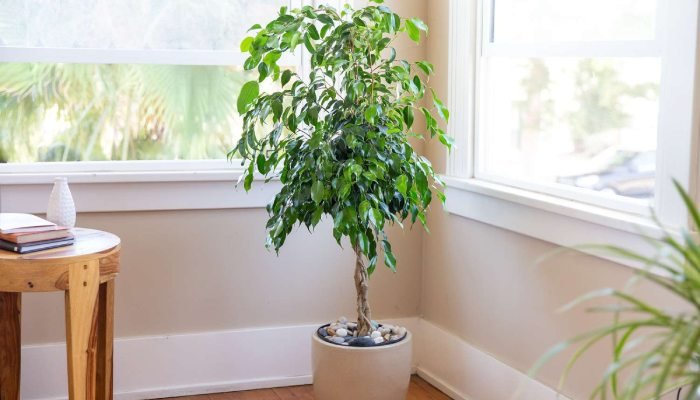The Ficus plant, a beloved member of the plant kingdom, is the focus of this exploration. These versatile and beautiful plants, known for their lush foliage and diverse species, have found a cherished place in horticulture.
Ficus plants have earned their popularity for their adaptability and aesthetic appeal, both indoors and in gardens.
This outline aims to provide a comprehensive understanding of the Ficus plant, from its taxonomy and botanical characteristics to cultivation tips, ecological significance, and potential challenges.
By delving into the world of Ficus, we hope to foster a deeper appreciation for these remarkable plants and encourage their responsible care and conservation.
Taxonomy and Classification
Understanding the taxonomy and classification of the Ficus plant is like exploring the family tree of these remarkable botanical wonders. In the vast realm of the plant kingdom, Ficus plants carve out their own unique niche.
 They belong to the Kingdom Plantae, with further categorization into Phylum, Class, Order, and Family. The Genus Ficus is where they really find their identity, and within this genus, various species come to life.
They belong to the Kingdom Plantae, with further categorization into Phylum, Class, Order, and Family. The Genus Ficus is where they really find their identity, and within this genus, various species come to life.
Each species brings its own distinct charm and characteristics to the world of Ficus plants. These common varieties and species of the Ficus plant showcase the diversity and richness that make them such beloved members of the plant kingdom.
You should also read: Vastu for Snake Plant
Botanical Characteristics
Exploring the botanical characteristics of the Ficus plant is like discovering the unique traits that define this green marvel. The morphology of the Ficus plant is a study in diversity.
Its leaves come in various shapes and sizes, from broad, glossy ovals to slender, delicate fingers, showcasing the plant’s adaptability. The fruits, often resembling tiny gems, add to the allure.
 Ficus plant bark, on the other hand, can be smooth or rough, depending on the species, lending character to its appearance.
Ficus plant bark, on the other hand, can be smooth or rough, depending on the species, lending character to its appearance.
In terms of growth habit, Ficus plants span a spectrum of sizes and shapes, from towering trees with majestic canopies to compact shrubs that fit snugly in indoor pots.
When it comes to reproduction, pollination is often a delicate dance with nature, involving fig wasps in many cases. Seed dispersal mechanisms, like birds and mammals, contribute to the Ficus plant’s survival and propagation, ensuring their legacy in the botanical world.
Habitat and Distribution
The Ficus plant’s versatility and capacity to adjust to different climates and landscapes make it a true botanical survivor, earning its place in the hearts of both nature enthusiasts and horticulturists.
 This adaptability showcases the incredible journey of the Ficus plant across the Earth’s varied terrains.
This adaptability showcases the incredible journey of the Ficus plant across the Earth’s varied terrains.
Also like to read: Money plant
Cultivation and Care
Cultivating and caring for the Ficus plant is a rewarding endeavor that comes with some guidelines. The amount of light the Ficus plant needs can vary; some thrive in bright, indirect sunlight, while others appreciate more shade.
 The Ficus plant demonstrates remarkable resilience in the face of temperature fluctuations, though it prefers a stable, moderate range.
The Ficus plant demonstrates remarkable resilience in the face of temperature fluctuations, though it prefers a stable, moderate range.
Regular pruning and maintenance can help shape and maintain its beauty, while keeping an eye out for pests and diseases is essential to ensure the Ficus plant’s health and vitality.
Uses and Benefits
The Ficus plant holds a special place in our lives, offering a myriad of uses and benefits. In landscaping, the Ficus plant serves as a green canvas, adding lush beauty and structure to gardens, parks, and urban spaces.
Indoors, it becomes a beloved houseplant, brightening homes and offices with its graceful foliage. Beyond aesthetics, the Ficus plant plays a crucial ecological role, providing shelter and sustenance to a variety of wildlife.
In some cultures, it also carries traditional and medicinal significance, with parts of the Ficus plant being used for remedies and rituals. The multifaceted contributions of the Ficus plant remind us of its enduring presence and the richness it brings to our lives.
Also know: Money plant decoration ideas
Challenges and Concerns
While the Ficus plant is beloved, it’s not without its challenges and concerns. One significant issue is its invasive potential. In some regions, certain Ficus species can out-compete native plants, disrupting local ecosystems.
Additionally, the plant can trigger allergic reactions in some individuals due to the latex it produces. However, it’s crucial to balance these concerns with conservation efforts.
 Many organisations and botanists work tirelessly to protect native flora and fauna from the invasive tendencies of some Ficus plants.
Many organisations and botanists work tirelessly to protect native flora and fauna from the invasive tendencies of some Ficus plants.
By raising awareness and implementing responsible cultivation and management practices, we can mitigate these challenges and continue to enjoy the beauty and benefits that the Ficus plant brings to our world.
Fun Facts and Trivia
Discovering the world of the Ficus plant unveils a treasure trove of fun facts and trivia. These plants have woven themselves into the tapestry of human history and culture, with significant roles in rituals, myths, and traditions across various societies.
The Ficus plant’s historical and cultural significance spans from ancient Egypt to modern-day Asia. In addition to their cultural importance, Ficus plants boast some remarkable characteristics.
You should also read: Jade plant benefits
One unique feature is their ability to form intricate aerial roots, often giving rise to mesmerising, hanging gardens.
Some Ficus species even serve as hosts to specialised wasps, forming a mutually beneficial relationship, a testament to the intricate web of life that the Ficus plant contributes to.
These captivating aspects of the Ficus plant continue to amaze and inspire people worldwide.
Conclusion
In conclusion, the journey through the world of the Ficus plant has been a revealing exploration of its rich tapestry. We’ve unearthed key points about its taxonomy, habitat, uses, and challenges.
The Ficus plant’s adaptability and unique characteristics make it a cherished member of the botanical realm, both indoors and in the wild. Its ongoing relevance in horticulture is evident in its widespread cultivation and role in enhancing our landscapes and indoor spaces.
Moreover, in the realm of ecology, Ficus plants contribute to the intricate web of life, underscoring their significance. As we nurture and protect the Ficus plant, we continue to reap the benefits of its enduring presence in our lives and the natural world.
Consider reading:


